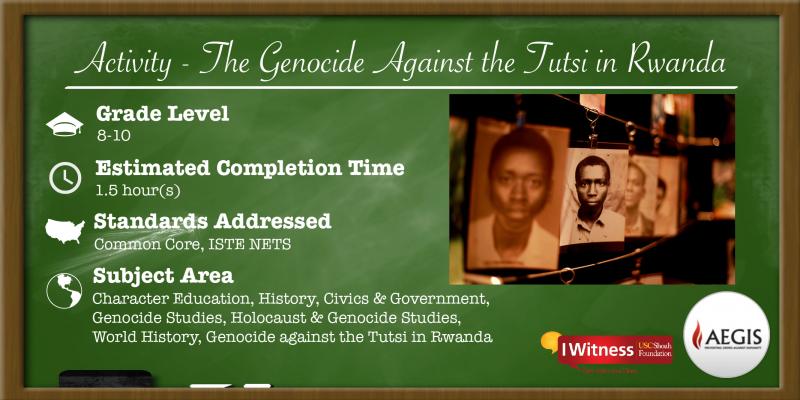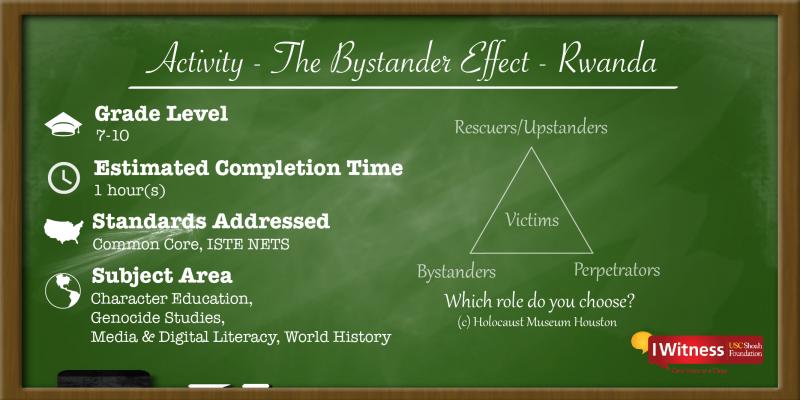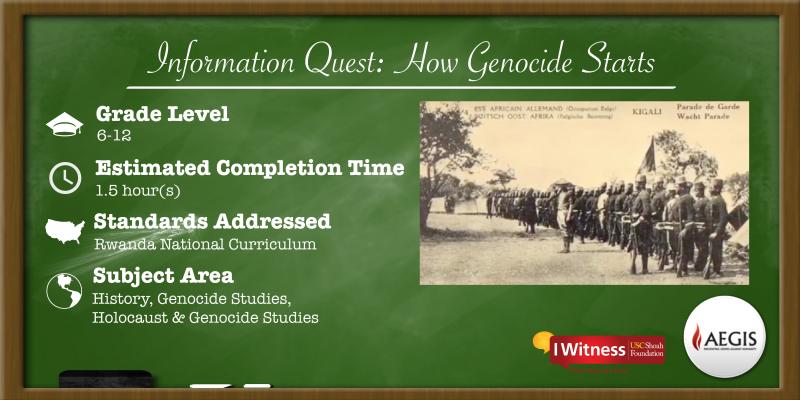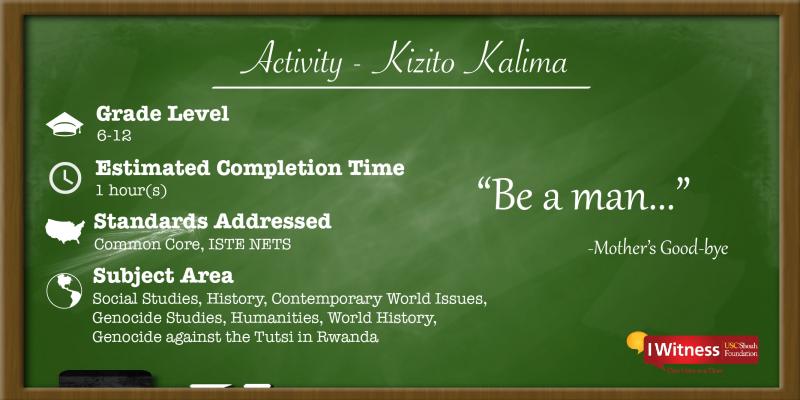Resources for Teaching about the Genocide against the Tutsi in Rwanda
April 7, 2016 marks the 22nd anniversary of Kwibuka, the official anniversary of the Genocide against the Tutsi in Rwanda. From April to July 1994, one of the most brutal genocides in human history occurred in Rwanda. It claimed the lives of 800,000 men, women, and children, most of whom were of Tutsi descent.
To help introduce your students to the Genocide against the Tutsi in Rwanda explore testimonies and activities in IWitness.
First Step Register for IWitness
1. Testimony
2. IWitness Activities
Through multimedia activities centered on testimony students explore themes including propaganda, the bystander effect and the individual experience. Every Friday throughout the month of April, IWitness will publish a new activity geared for Rwandan students. Make sure to log into IWitness to discover the new activities.
The Genocide against the Tutsi in Rwanda

From April to July 1994, one of the most brutal genocides in human history occurred in Rwanda. It claimed the lives of 800,000 men, women and children, most of whom were of Tutsi descent.
The Genocide against the Tutsi in Rwanda, as the United Nations Security Council agreed it should be known as in January 2014, shared characteristics with other genocides that came before and after it.
Learning Aims: Through this Information Quest activity, students will learn about the history of the Genocide against the Tutsi in Rwanda specifically, the history of genocide generally, and the stages of genocide. They will also be introduced to testimony of eyewitnesses who survived.
 In this Mini Quest activity, students will develop an understanding of what it means to be a bystander and its potential impact in the context of the Genocide against the Tutsi in Rwanda.
In this Mini Quest activity, students will develop an understanding of what it means to be a bystander and its potential impact in the context of the Genocide against the Tutsi in Rwanda.
Learning Aims: Students will watch a number of testimonies from witnesses to and survivors of the Genocide against the Tutsi in Rwanda who describe the consequences of the bystander effect in their own lives. Students will construct a social media message for the #BeginsWithMe campaign that describes their own plan to counter bystander behavior.

From April to July 1994, one of the most brutal genocides in human history occurred in Rwanda. It claimed the lives of 800,000 men, women, and children, most of whom were of Tutsi descent.
Learning Aims: The Genocide against the Tutsi in Rwanda shared characteristics with other genocides that came before and after it. In this activity, students will learn about the history of genocide and the early stages of genocide. They will also be introduced to the testimonies of eyewitnesses who survived.
Kizito Kalima Information Quest

Information Quests are brief activities designed for students to view and reflect on an experience from a survivor's testimony. Students will watch parts of the testimony of Kizito Kalima, a survivor of the Genocide Against the Tutsi in Rwanda, 1994. Learning Aims: They will engage with his story and through his story learn about the experience of surviving genocide.
Available in educator dashboard connection videos provide foundational knowledge required for effective use and learning from content. Use the videos to introduce your students to the Genocide against the Tutsi in Rwanda.